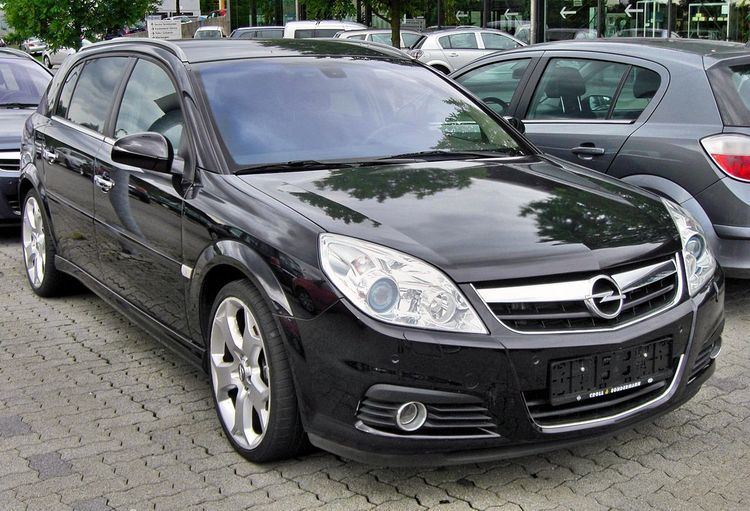Production 2003–2008 Class Large family car | Also called Vauxhall Signum | |
 | ||
The Opel Signum is a large family car that was engineered and manufactured by the German automaker Opel from 2003 to 2008. It was almost exclusively sold in Europe. In the United Kingdom, it was rebadged and sold under the Vauxhall Signum name. The Opel Signum was largely based on the Opel Vectra, and used the long-wheelbase version of the GM Epsilon platform, also used by the Opel Vectra Caravan.
Contents
The car was based on an unusual concept of a very large hatchback with a nearly vertical tailgate. Its dimensions place it between traditional large family cars and executive cars. In most markets, it was also priced accordingly (more expensive than the Opel Vectra, but less than e.g. Audi A6). The Opel Signum was intended to capture a whole new market segment.
From March 2008, the Vauxhall Signum was no longer listed on Vauxhall's current price list, which implied that RHD production ended, and both the Opel Signum and the Opel Vectra were replaced in October 2008 by the Opel Insignia range.
2001 Signum2 Concept
The Opel Signum2 Concept is a luxury hatchback presented by Opel at the 2001 Frankfurt Motor Show in Germany, and the 2001 Bologna Motor Show in Italy. Design elements from the car were later used in the production Signum, which went into production in 2003. In November 2000, sketches of the Signum2 were present.
The Signum name was also used on a concept car presented at the 1997 Geneva Motor Show in Switzerland. In August 2001, the name of the car was announced.
In August 2002, the first official pictures of the production Signum were released.
Differences compared to Vectra
The Signum platform is that of the Vectra Estate, the wheelbase is longer than the Vectra hatchback/saloon by 13 cm (5.1 in). This provides for very ample rear legroom. Instead of a traditional three-passenger bench seat, the Signum has two separate seats in the rear, which can be adjusted in many ways, including sliding back and forth (just like the front seats) and reclining backrests. There is also a very narrow central section, which includes a folding armrest and can also serve as a third seat (the Signum is fitted with three rear headrests and safety belts). The seats can also be folded down individually to increase the cargo space - a system that Opel calls Flexspace.
The Signum shares many body panels (including the complete front part of the body) and interior elements (in particular the complete dashboard and front seats) with the Vectra, but the tailgate and rear fender design is unique to the Signum. The Signum was facelifted along with the Vectra lineup in 2005, getting a new front fascia design and slight changes elsewhere.
All Signums were made alongside Vectras in Opel's Rüsselsheim plant in Germany.
Engines
The Signum was offered with a wide range engines it shared with the Vectra. These include:
Replacement
The car ceased production in 2008. Although no direct replacement was announced, much of the market territory it once occupied was filled by the Insignia (2008).
